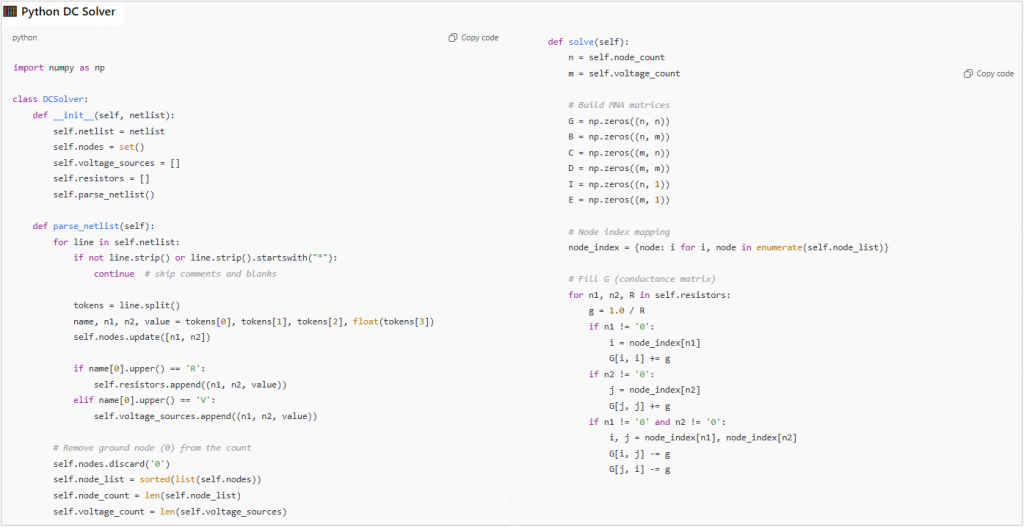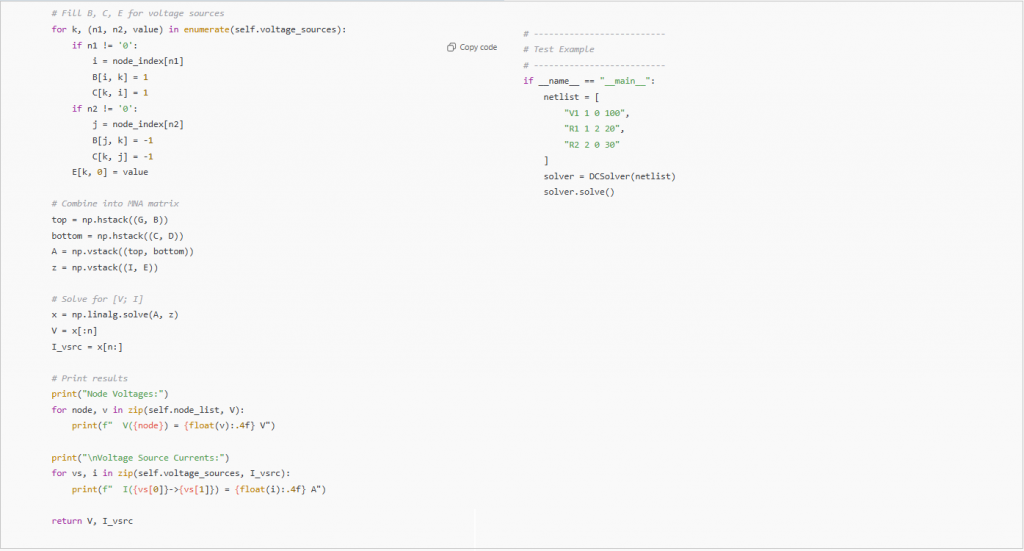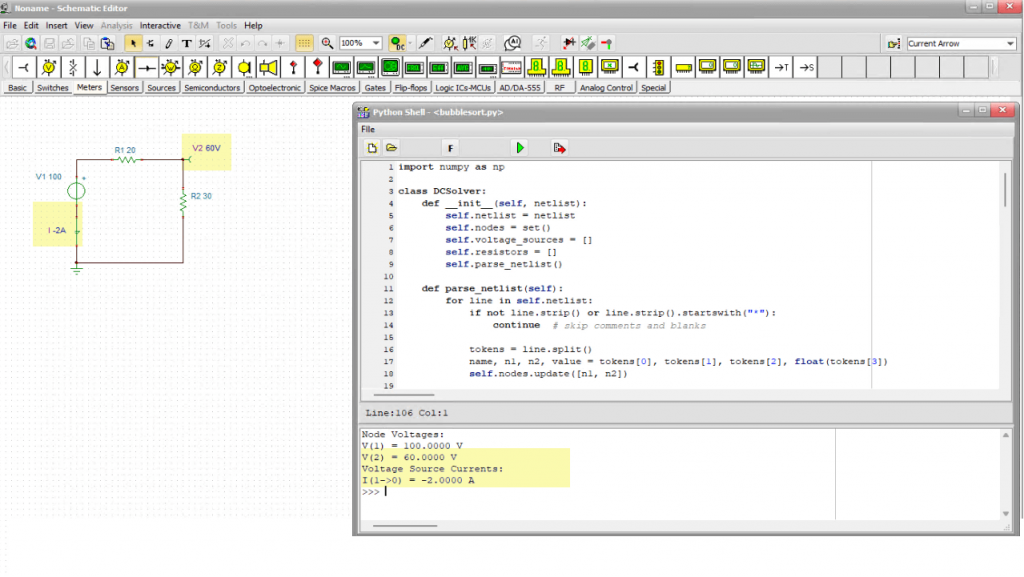In our latest video, we demonstrate how to use the ChatGPT AI to generate a general Python program, which you can then run directly within the TINA simulation software. By studying the Python code, you can learn about the principles behind how TINA works for linear DC circuits.
Generating the Python Code with ChatGPT
Start chatgpt.com and enter the following request:
“Generate a DC solver from netlist using Python. Include one test example with a voltage source of VS=100V, R1=20, R2=30.”
The AI will immediately respond with a structured explanation, followed by the generated Python code.
The generated code is typically quite general, allowing you to solve any DC circuit using the specified netlist syntax.


Important Note: Keep in mind that ChatGPT and most other AI systems may generate slightly different Python code or result formats each time they are used.
Integration into the TINA Environment
Once the code is generated, we need to import it into the TINA simulation software for execution.
Running the Code
- Use the “Copy code” icon to copy the generated Python code to your clipboard.
- Start TINA.
- Open the built-in Python compiler: Select Python Shell from the Tools menu.
- Paste the Python code into the compiler’s editing area.
- Press the “Run” icon.
The Python program will execute and display the nodal voltages, including the source current.

Comparison with TINA Simulation
To check the validity and accuracy, draw the circuit using the Schematic Editor of TINA and run a DC analysis. Enter the schematic equivalent of the example circuit, then press the DC button.
Results Match
The values calculated by TINA (V2 = 60 V and I= -2A) match exactly the results obtained from the AI-generated Python program.

By studying the Python code, you can learn about the principles behind how TINA works for linear DC circuits.
You can learn more about TINA here: www.tina.com
You can learn more about TINACloud here: www.tinacloud.com
Explore more content from our channel: https://www.youtube.com/@TinaDesignSuite

